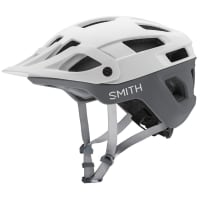
How Does MIPS Helmet Technology Work?
When it comes to protecting our heads during high-impact activities like bike riding and snowboarding, investing in a reliable helmet is crucial! While helmet designs have improved over the years, one innovative technology has revolutionized the industry by significantly enhancing safety standards: MIPS (Multi-directional Impact Protection System). In this blog, we’ll delve into the world of MIPS helmets!
What Is MIPS?
Firstly, MIPS stands for Multi-directional Impact Protection System. This technology was developed by a Swedish company with the aim of reducing rotational forces on the brain during angled impacts. Traditional helmets primarily protect against linear impacts, but MIPS helmets take it a step further by addressing rotational forces. Consisting of a low-friction liner placed inside the helmet, this feature allows for independent movement between the head and the outer shell.
MIPS For Bike Helmets
Without a doubt, MIPS is highly beneficial for mountain biking (MTB) and cycling. It offers an enhanced level of protection for riders by reducing rotational forces during an impact. For avid MTB and cycling enthusiasts, MIPS-equipped bike helmets provide an added layer of safety, ensuring a more secure and enjoyable riding experience. Great for confidently taking on challenging terrains and unpredictable conditions!
MIPS For Snow Helmets
In the same fashion, MIPS helmets are also highly recommended for snowboarding due to their ability to mitigate the rotational forces associated with falls, collisions, and freestyle manoeuvres. Undeniably, by wearing a MIPS snow helmet, snowboarders can significantly reduce the risk of brain injuries and enjoy the sport with confidence and peace of mind.
Remember to always choose the right size and ensure a proper fit, and replace your helmet if it has sustained any significant impact.
The Benefits of MIPS
Furthermore, there are many benefits to MIPS technology!

1. Enhance Protection
When it comes to activities like MTB, skateboarding, and snow sports, there is a higher likelihood of experiencing angled impacts. During these incidents, the head often rotates upon impact, subjecting the brain to rotational forces. MIPS helmets offer an additional layer of protection by reducing the rotational forces and minimizing the risk of brain injuries.
2. Reduces Brain Strain
The MIPS system imitates the brain’s natural protective mechanism. The movement of the low-friction liner redirects and absorbs the rotational forces, reducing strain on the brain. By mitigating rotational motion, MIPS helmets help minimize the risk of brain damage and associated long-term consequences.
3. Versatile Performance
This versatility ensures that riders can enjoy their sport with confidence, knowing they have reliable head protection. Bike riding, skateboarding, and snowboarding involve dynamic movements and various terrains. MIPS helmets are designed to offer versatile performance and protection for these activities.
4. Comfort and Fit
MIPS helmets are designed to be lightweight and well-ventilated, specifically ensuring breathability and reducing fatigue during prolonged use. Additionally, the MIPS liner does not compromise the overall fit of the helmet, allowing riders to enjoy a secure and snug fit without sacrificing safety.


To summarise, by choosing MIPS helmets athletes can significantly reduce the risk of head injuries. The integration of MIPS technology into these helmets demonstrates a commitment to rider safety and ensures that enthusiasts can enjoy their chosen sport with peace of mind.
All in all, prioritizing safety should always be the foundation for an enjoyable and secure riding experience. Check out our Helmet Safety Standards blog for further info!


